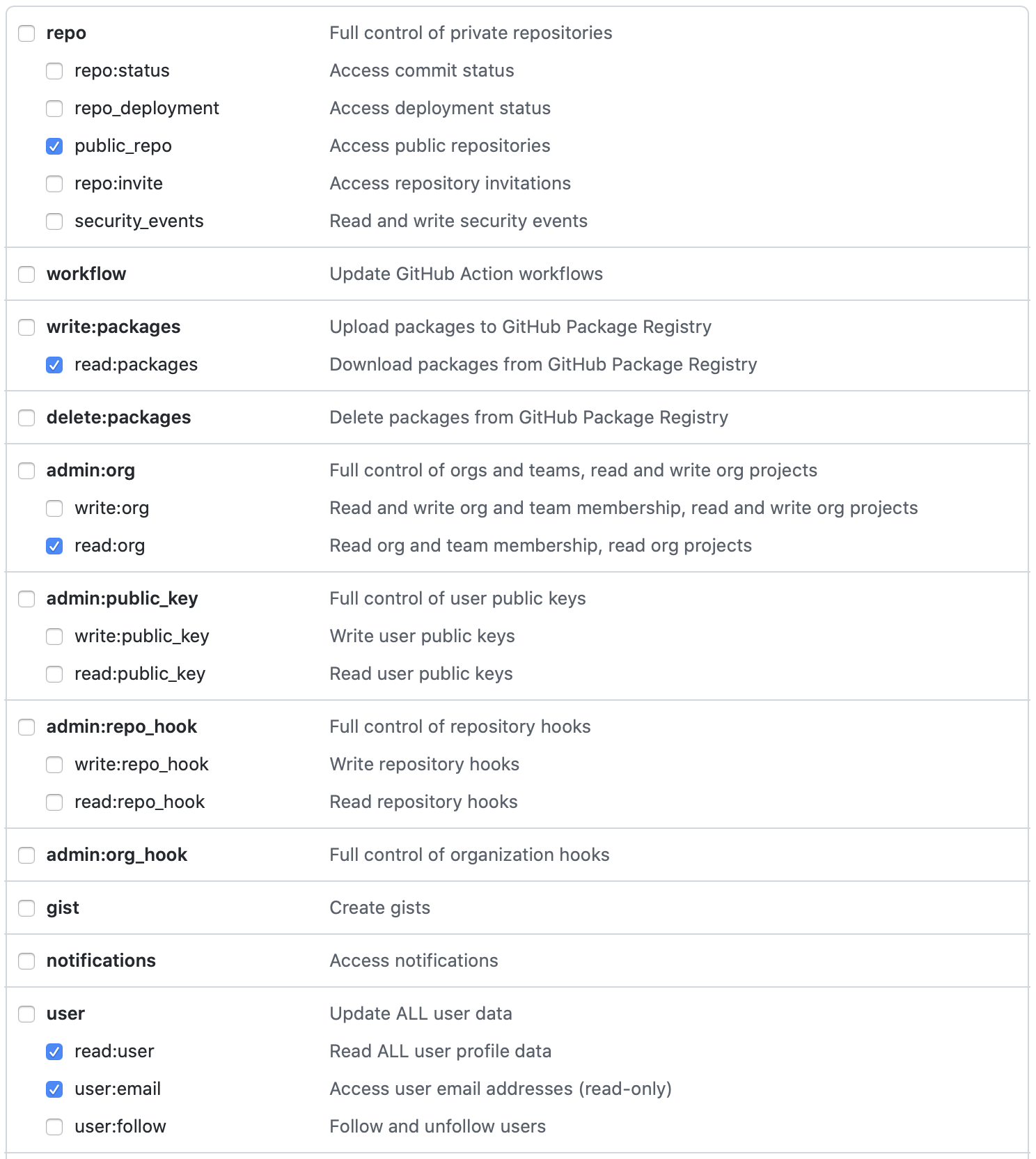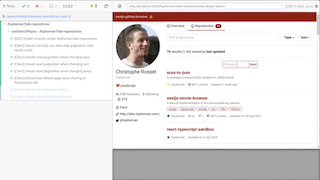This project is a reimplementation of the main features of the github.com website in NextJS.
- Checkout the demo on nextjs-github-browser.vercel.app
- Browse the online storybook
- Browse the Cypress Dashboard (with the reports of the e2e tests run on CI)
- Nodejs >=14
- npm >=6
git clone https://github.com/topheman/nextjs-github-browser.git
cd nextjs-github-browser
npm installThis project uses the Github GraphQL Apis. You will need to generate a personal access token.
- Create a
.env.localfile - Add
GRAPHQL_API_TOKEN=***to the file with your own token
npm run devThis will start a development server on http://localhost:3000.
This project is shipped with built-in mocking for the graphql layer. It works for both client-side and server-side rendering.
MOCKS_MODE=record npm run dev: will record any graphql request into.tmp/mocksMOCKS_MODE=replay npm run dev: will replay the mocks if available (if not, will let the request through)
You can use MOCKS_MODE with record / replay also on npm start.
You can override the target of the folder where the mocks are recorded by using MOCKS_TARGET=./tmp/my/specific/folder for example.
npm run storybookThis will start the storybook server on http://localhost:6006.
npm run buildThis will build the a production version of the website in the .next folder.
For production, we want to expose the storybook, to do that:
npm run build:allFirst, you need to build your project running npm run build:all, then:
npm startThis will launch a production server on http://localhost:3000.
You can change the port passing a PORT env var like: PORT=8080 npm start.
The project contains unit tests run with jest (the react part is relying on @testing-library/react)
npm run testTo run the cypress end-to-end test, launch a server in a terminal (in dev mode or production mode).
Then start the cypress test either:
- In gui mode:
npm run cy:open - In headless mode:
npm run cy:run
Please checkout eslintrc.js for the linting configuration:
- TypeScript
- Prettier
- Next
- React
- Tailwind
- Cypress
- ...
Each git push / PR triggers a test suite on github/actions. The following will be ran:
- linting
- type checking
- unit tests
- end to end test with cypress
The end to end test sessions are recorded, you can check them here.
Thanks to @octokit/graphql-schema and @graphql-codegen/cli, we can generate type definitions for the GraphQL queries we use.
The queries used in this project are in src/graphql.
The generated types and utils are in src/generated/graphql.ts.
When you modify/add a query/fragment, run npm run graphql-codegen to generate the types and utils.
- See this commit for the setup
- Thanks for the following resources:
The /api/github/graphql handler is available by POST requests to both client and server (because it's needed for both SSR and some use cases where we call directly graphql from the client).
You have the following use cases:
- full page render: browser -> nextjs(server) -> getServerSideProps ->
/api/github/graphql-> github graphql api- GET request issued by browser
- partial page render: browser(onRouteChange) -> nextjs(getServerSideProps) ->
/api/github/graphql-> github graphql api- GET request issued by nextjs router
- direct call to graphql from client: browser(apollo) ->
/api/github/graphql-> github graphql api- POST request, cache is manage client side by Apollo
I fixed the problematic of caching for the 2nd case by adding http header Cache-Control: private, max-age=120, must-revalidate.
You can activate it in local by using npm run start:cache.
A better way would be to use some database like redis and store the payloads indexed by serialized graphql variables - this is a personal project 😉.
- Setup apollo-client in NextJS: src/libs/apollo-client.ts (links to resources in source code)
- Github advanced search
- useHooks(🐠)
- cypress-io/github-action
- github actions - Building and testing Node.js
This project is based on previous work:




